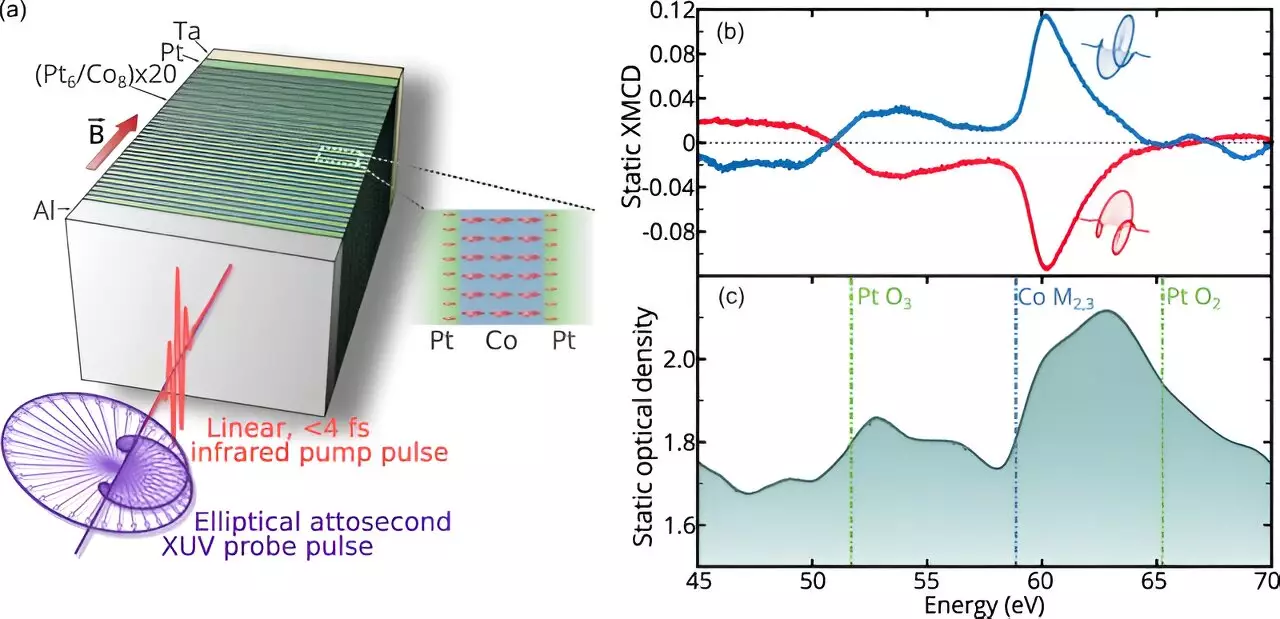In the realm of modern physics, spin currents represent a captivating frontier. They involve the organized motion of electrons that are aligned by their intrinsic spin, a fundamental property akin to angular momentum. The generation and manipulation of spin currents have implications for the development of next-generation electronic devices, promising speed and energy efficiency that surpass traditional mechanisms. Recent research has illuminated new pathways to create these currents directly, leveraging the power of ultrashort laser pulses.
An international consortium of physicists has recently made significant strides in this area, presenting their findings in the esteemed journal **Physical Review Letters**. The pivotal innovation of this study lies in its method of generating spin currents using both a linearly polarized laser and a circularly polarized probe laser. Previous methodologies relied on indirect means to create spin, which often led to inefficiencies stemming from randomly oriented electron spins. The new approach effectively circumvents these hurdles by generating uniform spin orientation directly.
The experimental setup was both intricate and ingenious, utilizing a target composed of twenty alternating layers of platinum and cobalt—each a mere nanometer thick. Enveloped in a magnetic field, this structure ensured that electron spins were aligned across the layered materials, creating optimal conditions for spin current generation. Firing the linearly polarized laser pulse initiated the process, while the subsequent application of the circularly polarized probe laser facilitated the quick transition of electron spins between layers.
One of the most remarkable aspects of this research is its ultrafast nature. The manipulation of electron spins occurs within femtoseconds—a timeframe shorter than previously achieved through alternative methods. The ability to prompt such rapid changes in magnetic ordering represents a game-changer for the field. As confirmed through both experimental observations and theoretical simulations, the technology exhibits a potential that could revolutionize the efficiency of future electronic devices.
The researchers documented a sudden shift in magnetism within the target layers upon exposure to the laser pulses. This alteration not only indicates the effectiveness of the method but also opens avenues for exploring more sophisticated spintronic applications. The success of this study in aligning electronic spins on such a precise timescale underscores the synergy between experimental and theoretical physics.
The implications of these findings are profound. The ability to directly manipulate spin currents could lead to devices that boast significantly higher speeds and reduced energy consumption. Beyond mere technological advancements, this research pushes the boundaries of our understanding of quantum mechanics and materials science, revealing deeper connections between light, magnetism, and electron behavior.
As the field of spintronics matures, ongoing research endeavors will likely build upon this foundational work. Innovations derived from these findings could spark a new era of computing and communications technologies, paving the way for smarter, more efficient systems. In a world increasingly reliant on rapid and energy-efficient technologies, the practical applications of this research are both timely and critical.


Leave a Reply